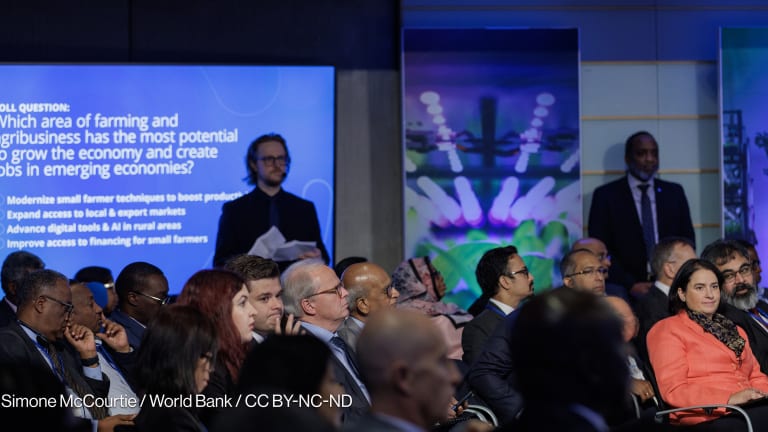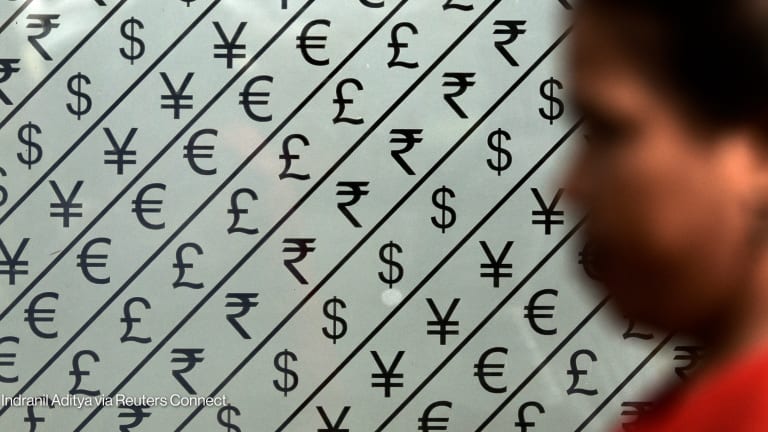World Bank-Tajikistan Partnership
For the 2015-2018 partnership strategy period, the World Bank will be focusing on developing the private sector and promoting inclusive growth in Tajikistan.
Cotton farm. Cotton exports is one of the main drivers of Tajikistan’s economy. Photo by: Gennadiy Ratushenko / World Bank / CC BY-NC-ND Despite consistent economic growth over the past several years, Tajikistan remains the poorest country in Europe and Central Asia; its gross national income per capita in 2013 was $990, 21 percent lower than the GNI per capita of the second-poorest country in the region, Kyrgyzstan. The country’s economy relies heavily on remittances and exports of cotton and aluminum, and is very vulnerable to market fluctuations. While remittances have been strong, accounting for nearly half the country’s gross domestic product in 2013, commodity exports have not performed as well, mainly as a result of declining cotton and aluminum prices. The World Bank notes that unless Tajikistan strengthens its private sector, annual GDP growth will slow from an average 8 percent to just 6 percent over the next four years. Tajikistan currently has restrictive policies on opening and operating businesses, and the discouraging business climate has resulted in limited job opportunities. Foreign direct investments have been very low as well, accounting for only 1.2 percent of the country’s GDP in 2013. Agriculture is widely regarded as a key area that can engage the private sector, sustain economic growth and promote inclusive development. It is the second-largest contributor to the country’s GDP and employs 46.5 percent of the Tajik workforce. Development in this area, however, will prove challenging. Geographically, Tajikistan is a landlocked, mountainous country with limited arable land causing it to rely heavily on irrigation. Nearly a third of the country’s arable land suffers from deteriorating irrigation and drainage systems, waterlogging and salinization, leaving them underutilized and unproductive. Further, Tajikistan’s geography also makes the transportation and communication sectors problematic, impeding not only on trade but also on the delivery of basic services especially to the most isolated communities. Against this setting, the World Bank, through its 2015-2018 partnership strategy for Tajikistan, has renewed its commitment to helping the country achieve its full potential. Funding levels For the 2015-2018 funding period, aid will be coursed mainly through the World Bank Group’s International Finance Corp. and International Development Association. IFC is expected to provide between $10 million and $20 million annually along with technical assistance services. Meanwhile, IDA is set to provide an estimated $60 million annually, on average, to be supplemented by trust fund allocations and analytical advisory activities. Below is a breakdown of recent World Bank disbursements to Tajikistan. Funding priorities The World Bank’s twin goals are to reduce poverty and promote inclusive development in Tajikistan. To achieve these objectives, the bank structured the current partnership strategy around three main principles: - Developing the private sector. - Expanding delivery of basic services. - Strengthening transportation and communication sectors. The overarching themes for this partnership period include gender, governance and climate change adaptation. Below is a breakdown of recent IDA disbursements by sector: Among the recently launched World Bank projects in Tajikistan are: - Environmental Land Management and Rural Livelihoods Project ($16.88 million) — aimed at increasing productivity in rural areas while improving natural resource management and climate change resiliency. - Global Partnership for Education ($16.20 million) — designed to scale up the quality of preschool and basic education while broadening access to these services. - Tajikistan Health Services Improvement Project ($23 million) — geared toward improving the quality and coverage of primary health care in rural areas. - Tajikistan Agriculture Commercialization Project ($25.92 million) — aimed at increasing access to financial services and building the capacity of agricultural producers. As of April this year, active World Bank projects in Tajikistan amounted to roughly $222 million. Of this amount, 34 percent was allocated for agriculture and rural development, 19 percent for water, 16 percent for energy, 10 percent for public sector and economic policy, and the rest are for education, health and social protection, and private sector development. Devex analysis The World Bank realigned its focus for Tajikistan from crisis mitigation in the 2010-2014 partnership strategy period to enacting institutional reforms. For the 2015-2018 partnership period, the World Bank, through IDA, will finance 14 operations in Tajikistan. Of these, six will be for private sector development, another six for social inclusion and the rest will focus on improving regional connectivity. To consolidate national and regional efforts and maximize IDA resources, the World Bank has decided to implement fewer projects with larger funding. While the bank had 17 active projects worth $208.8 million in 2010, for instance, it now only has 13 active projects in the country as of April this year. The total budget for all 13 projects, however, is about $222 million. Trust fund activities will continue to supplement World Bank projects in areas of education, energy, agriculture, food security and social development. Meanwhile, IFC’s active investments and advisory portfolio, consisting of 20 projects worth $31.6 million, will support microfinance and agribusiness. The World Bank has had a long-standing partnership with Tajikistan. With increased funding for its interventions and the recent launch of a new partnership strategy, the bank is well-positioned to continue delivering aid to Tajikistan for years to come. Contact Country Office Contacts Tel: (992-48) 701-5810 Email:
Cotton farm. Cotton exports is one of the main drivers of Tajikistan’s economy. Photo by: Gennadiy Ratushenko / World Bank / CC BY-NC-ND
Despite consistent economic growth over the past several years, Tajikistan remains the poorest country in Europe and Central Asia; its gross national income per capita in 2013 was $990, 21 percent lower than the GNI per capita of the second-poorest country in the region, Kyrgyzstan.
The country’s economy relies heavily on remittances and exports of cotton and aluminum, and is very vulnerable to market fluctuations. While remittances have been strong, accounting for nearly half the country’s gross domestic product in 2013, commodity exports have not performed as well, mainly as a result of declining cotton and aluminum prices.
This story is forDevex Promembers
Unlock this story now with a 15-day free trial of Devex Pro.
With a Devex Pro subscription you'll get access to deeper analysis and exclusive insights from our reporters and analysts.
Start my free trialRequest a group subscription Printing articles to share with others is a breach of our terms and conditions and copyright policy. Please use the sharing options on the left side of the article. Devex Pro members may share up to 10 articles per month using the Pro share tool ( ).
As former Devex editor for business insight, Aimee created and managed multimedia content and cutting-edge analysis for executives in international development.








